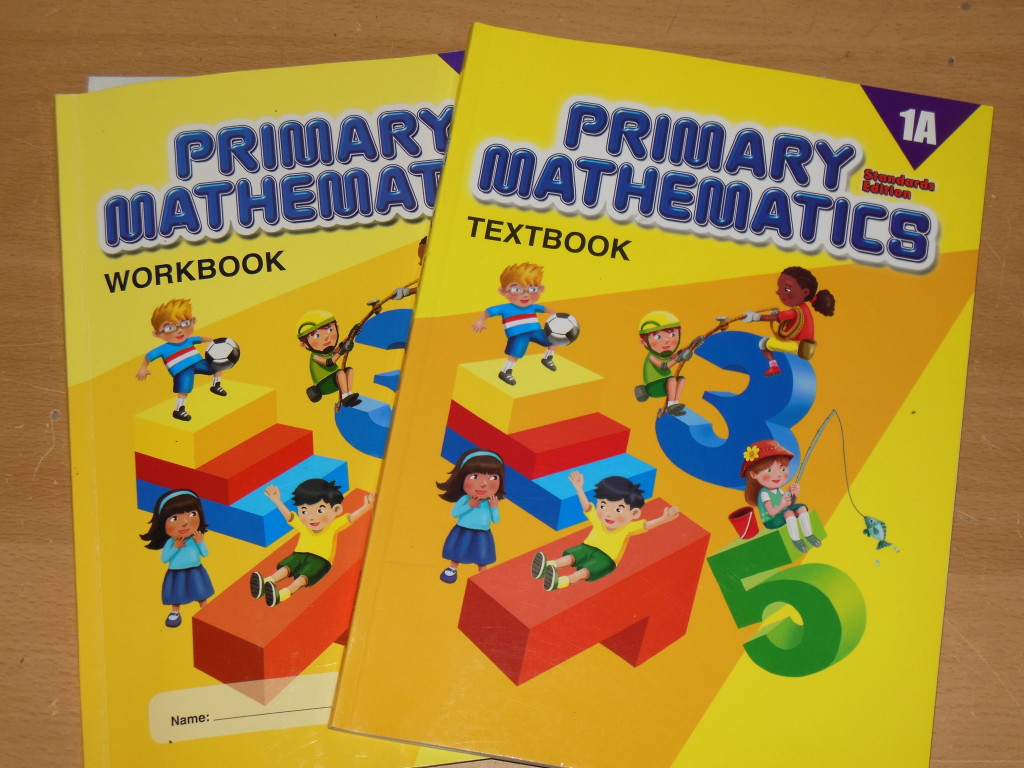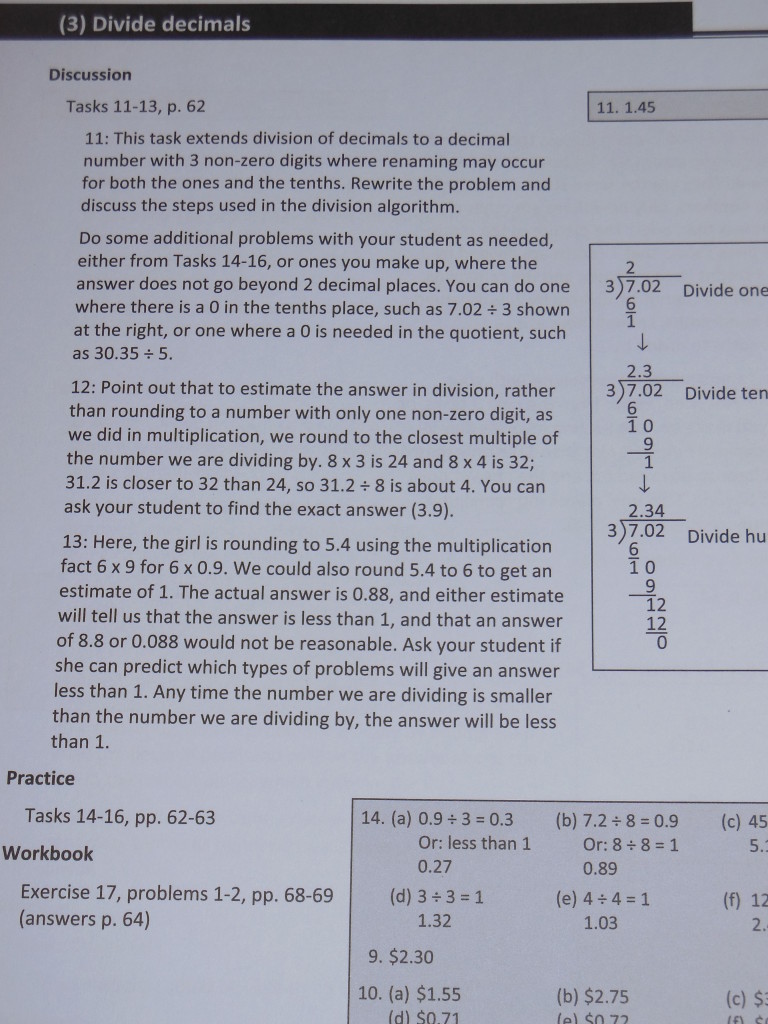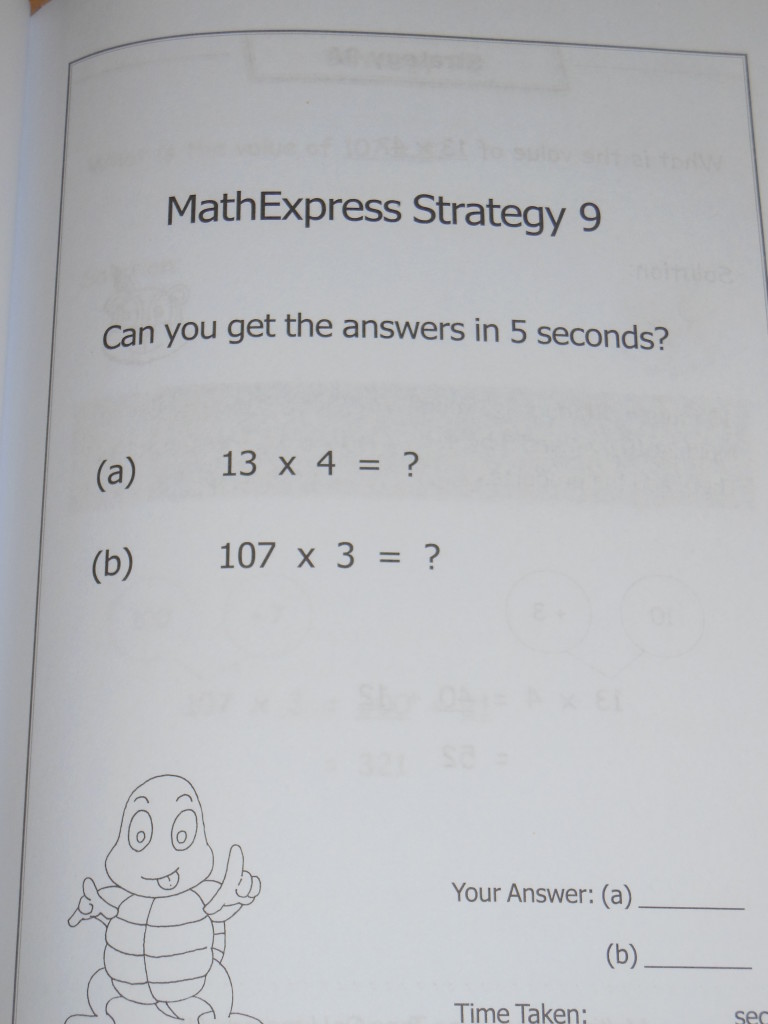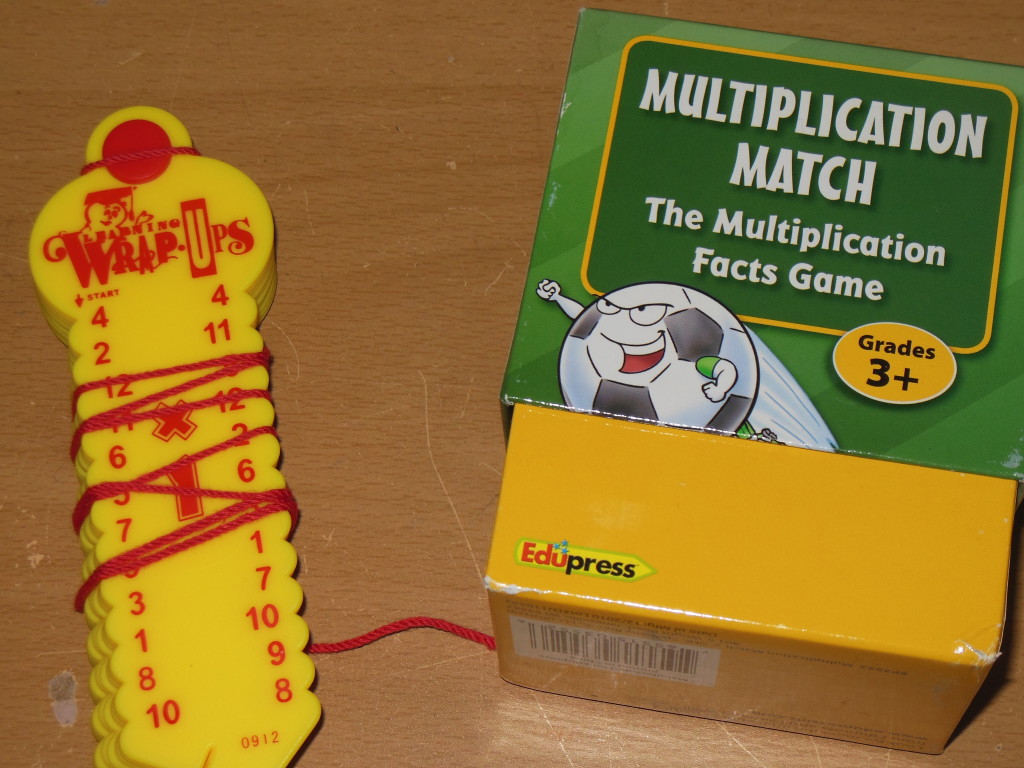With children who desire a future in science and computers, math is important in our household. This post is part of the Virtual Curriculum Fair: Discovering Patterns in Mathematics, Logic, or Science series. Check out the links at the bottom of this post to read how others approach math, logic, or science.
When my oldest child was in second grade, I came to the realization that his interest in science wasn’t going to wain any time soon. He had been interested in different areas of science since toddlerhood. Since that time, my younger son has expressed an interest in a future with computers. Because of my son’s interest, I made a decision to give my children a rigorous math education so that they would be fully prepared if they do decide to go into a science or computer programming.
Math isn’t a subject that is well-loved by my children, but most everything I have read said that a strong math education is very important for a future in science or computers. So we switched curriculum and have made math important ever since. Basically, the line-up for my kids is Singapore math through 5B followed by Art of Problem Solving. These choices are designed to really help a child understand the why and how of math.
My math education, like many others, focused on the how of math and never really delved much into the why. I never liked math. I did fine with it, but found it quite boring. Since switching to Singapore and using Art of Problem Solving, I’ve come to love math. While my kids aren’t in the place of loving math, my enjoyment of the subject helps me approach learning new concepts in a positive manner.
As part of the Virtual Curriculum Fair, I wanted to demonstrate what the curriculum is like. Because of that, this post includes tons of pictures. I’ve listed each child’s curriculum separately, and have included a program that I use with all three of them.
Please note that some links in this post are affiliate links for Amazon.
Kindergarten, 4th, and 6th grade
I use ZomeTools with all three of my kids. With two visual-spatial learners, I wanted to make math a bit more hands-on and use materials that will work to my children’s strength. ZomeTools is a building tool that can be used to create shapes – simple and complex. We just started with this one during this school year and all three of my kids really enjoy it. We purchased the Zome Tools Advanced Math Set. Right now we are going through the ZomeTools Lesson Plans book that can be printed off for free here (pdf file). When we finish that, I plan to use the Zome Tools Geometry book.
Kindergarten
Since my daughter finished the Singapore Kindergarten books last year, we started on the Singapore 1A book (Standards edition) this year. Because I’m familiar with the Singapore program this time around, I didn’t purchased the Home Instructor’s Guide for 1A although I do have it for 1B. She is using the textbook and workbook as well as games for math fact practice.
Here you will see inside the Singapore 1A Textbook (Standards edition). It is colorful. The Singapore approach is designed to be used by first using manipulatives with the teacher, then the textbook with the teacher, and finally the workbook. I’ve used the textbook as a book that we don’t write in, but it can be written in, if you choose to do so.
This is a workbook page from the Singapore 1A Standard edition workbook that goes along with the textbook lesson shown in the picture above. Typically there are a couple workbook pages for each lesson. Sometimes we finish more than the expected amount and other days we spend several days or a week on one section if I feel my daughter needs more practice.

4th grader
My 4th grader has a bit of a head for math and he is a visual-spatial learner so I’ve done accelerated math with him in the past. This means that we went through some of the Singapore books at a faster pace. Now, he is at a level that suits him so we are slowing down and making sure everything is solid before he heads into pre-algebra.
This is the Home Instructor’s Guide for 4B (Standards edition). I’ve had my boys complete all the mental math problems in the Home Instructor’s Guides up through 4B. My 4th grader has recently finished up through the 4B mental math problems. Going through these has been difficult at times, but my children’s mental math skills grew and stretched with these exercises.
Here is an example of the Home Instructor’s Guide lesson in the 4B book (Standards edition).
Because my son is a visual-spatial learner and because he needs a personalized approach to his math education, I’ve mashed together several different resources to meet his needs. I put everything together into a big list and we just go down the list and cross off things as we go. I’m using the 5A and 5B books at the same time and switching back and forth to give him more variety in what he is learning. I’m also not using the workbooks, but having him spend more time doing all the problems in the text. The different sections don’t conflict with each other so it is working out quite well. We typically do about 2 things on the list for one day of math. Here is an example of our current list:
Here is his main set-up for math. We are using the Singapore 5A and 5B textbooks, Challenging Word Problems 5, and the Math Express Books (currently on book 3, but will finish through book 5).
The Math Express Speed Math Strategies gives my son further practice with mental math skills. Mental math skills are one of my son’s stronger areas, but he still needs practice with math facts. These books have been a good fit for him this year. We started the year at the end of book 1 and plan to continue until we finish book 5. We are about halfway through the school year and have just started book 3, so I expect we’ll be finishing up these books next school year.
Each lesson starts off with a few problems to see how quickly the child can do it. Usually, we don’t come close to the targeted time.
The next two pages give instruction on how to use a mental math strategy so you can complete the problems quicker in your head.
Then your child has two pages of practice using the new strategy.
On the last page there is a test to see how well the child has learned the strategy If my son needs more practice, we do that and come back to the test on another day. Visual-spatial learners aren’t typically ones who enjoy timed tests, but my son likes trying to beat his best time.
This is what the Singapore 5A textbook looks like inside. I go over the lesson with him and have my son practice problems on his own. Sometimes we only do a few problems and sometimes I need to make up extra problems.
We used to skip the Practice pages in the textbook when he did the workbook. Now we do all the practice pages and my son does his work on a piece of paper.
This is an example of the Challenging Word Problems book 5. Some of these problems can stump us. The Singapore bar graph method is often helpful in figuring out the answers. I have my kids use the Challenging Word Problems book by writing their work on a piece of paper so I can reuse the books. The answers to the Challenging Word Problems are in the back of the book. They don’t typically show how to work the problems in the answers though. You will find a few worked examples in the book that can help if your child is stuck. 
Another example of the Singapore 5 Challenging Word Problems book.
Since I’m not using the Home Instructor’s Guide for level 5, I needed the answer key for easy answer checking. If you purchase the Home Instructor’s Guide, you do not need a separate answer key.
My son also spends time on learning math facts. He is made great progress this year with his multiplication facts. The learning wraps are a hands-on way to associate multiplication problems with the answers. The Multiplication Match game is fun too. I start out by counting out 10 cards and timing how quickly my son can answer them. There are 5 different card sets so we alternate which one we use. He tries to beat his former time for the card set. I then spread the cards out on the floor and he tries to beat me matching up multiplication problems with similar answers (i.e. 4×3 matches 2×6). I usually give him a bit of a head start to help make it a little more even.
6th grade
Toward the end of last school year we finished up Singapore 5 and started Art of Problem Solving Pre-Algebra. This math curriculum is quite wordy and challenging. It really helps solidify a thorough understanding of math. My son uses it with the free Alcumus online learning system that goes along with the book and really enjoys watching the humorous online Art of Problem Solving videos that go along with the lessons. I chose this book for him because of the wordiness. He is very much a verbal guy and I thought the explanations would be a good fit. Also, I wanted something that would be challenging to build strong skills. This book fits the bill.
Initially, he started doing the work independently, but now we do the lessons together. He needed more guidance at this point. He is more motivated when we work together too. I must admit that I love this curriculum. It is like each problem is a complicated math puzzle.
Art of Problem Solving is designed to teach you math by actually doing math. It doesn’t tell you how to do the problems until you have actually attempted to figure it out yourself first. My son and I work through the problems together when we are learning new concepts and then he watches any instructional videos that go along with the lesson. Following that, we tackle the section’s exercises together. We typically work side by side and compare answers. If he didn’t answer correctly, we go over things before going on to the next problem. Any yes, sometimes he gets it right and I don’t! Doing math this way is much more time consuming for me, but it has been very effective for my son. Since math is important for his future goals, I’m putting my time into this with him. I’m enjoying it to boot!
Here is an example of the first page of a section. There are no daily lessons. We just work up to a certain point and then continue the next time. Lots of words are in the lessons and there are no illustrations or bright colors.
Here is an example of one of the teaching problems. The problems are all listed separately at the start (like in the picture above). Following that, the problems are listed with an explanation how to complete the problem most effectively.
The exercises are at the end of the section. The answer to the exercises are in a separate book.
At the end of each unit there are lots of review problems and very challenging problems. I must admit that I get a little excited when we get some of the challenging problems correct.
This is an example of the solutions manual. It isn’t just an answer key, but it describes how to solve the problems.
My children’s math education could potentially be very important if my children decide to go into STEM fields. Giving my children a strong math education has been time-consuming, but rewarding. In this journey, I’ve also found that I’ve developed a love for math that I didn’t know existed. So there you have it. I’ve listed my attempt at providing a solid math education for children who may one day really need it. I plan on sticking with Art of Problem Solving for the long-term. I’m happy that they do have online classes if things get over my head at some point.
As you consider what direction you want to go with your children, read about what some other homeschooling parents are doing for math, logic, and science.
Our {almost} FREE 2nd and 4th Grade Math Program by Susan @ Homeschooling
Hearts & Minds
Supercharged Science’s Mathemagic by Kristi K. @ The Potter’s Hand Academy
Math & Logic Resources by Chareen @ Every Bed of Roses
How We Tackle Middle School Math, Logic & Science by Christy @ Unexpected Homeschool
A Peek into our Homeschool: Math & Logic by Brittney @ Mom’s Heart
Math and Logic: Patterns and Reasoning by Leah@As We Walk Along the Road
2014 Virtual Curriculum Fair: Discovering Patterns: Mathematics, Logic, and
Science by Stacie @Super Mommy To The Rescue
Virtual Curriculum Fair: The World of Patterns and Logic by Joelle
Discovering Science & Math w/ Apologia & Saxon by LynnP @ Ladybug
Chronicles
Make Math Fun: Your Kids Will Thank You by Tauna @ Proverbial Homemaker
Our Curriculum Choices 2014 ~ Mathematics by Renata @ Sunnyside Farm Fun
My Favorite Math For Boys by Monique @ Living Life and Learning
Discovering Patterns: Mathematics, Logic, and Science in our Classical Homeschool by Sharra @ The
Homeschool Marm
Math–Our Four Letter Word by Nicole @ Schooling in the Sun
If I Knew
Then What I Know Now by Kristen @ Sunrise to Sunset
Godly Patterns in Homeschooling by LisaN @ Golden Grasses
Math and Science anyone? by Michele@ Family, Faith and Fridays
My 7 Favourite Math Resources by Kim @ Homestead Acres
Basic Instincts by Chelli @ The Planted Trees
Getting My Teens Ready for Algebra by Debra @Footprints in the Butter
Math We Love by Laura @ Four Little Penguins
2014 Virtual Curriculum Fair ~ Math & Science by Jennifer @ a glimpse of our life
Our Take on Math, the Elementary Years – Charlotte Mason-style by HillaryM @ Our Homeschool Studio
Tackling Math and Science from Multiple Angles by Laura @ Day by Day in Our World



























I love that you showed actual examples from the books! I had heard of Singapore and had friends that liked it, but I’ve never seen the Art of Problem Solving. That looks good!
Thanks Leah! I am really enjoying Art of Problem Solving. It has been slow going, but we are learning a lot!
Wow, that Zome Tools set looks amazing! I noticed it is on sale right now- I will have to do some more research on it! Thanks for the recommendation, I have two boys that would love all of the pieces!.
Thanks Michele. My kids all love ZomeTools and I see how it will give us years and years of building. I love their guarantee too. They will replace any broken struts for free.